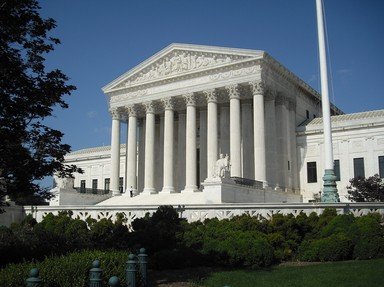Quiz Answer Key and Fun Facts
1. In 1963, the Supreme Court used the First and Fourteenth Amendments of the Constitution to uphold the rights of marchers to peacefully demonstrate in front of a state house. Which state, home to Myrtle Beach and Fort Sumter, was involved in this case, titled Edwards v. _______________?
2. In 1965, minister Benjamin Elton Cox led a protest with the group Congress of Racial Equality in front of a Louisiana courthouse, to express their objections to a previous incident where police arrested some of their members. Then, Cox was arrested and his convictions were affirmed by Louisiana's courts, leading to the Supreme Court case of Cox v. Louisiana.
In which city, which is the capital of the state and means "red stick" in French, did these events happen?
3. Adderley v. Florida was a 1966 Supreme Court case where the Court reviewed a claim by college students that their First and Fourteenth Amendment rights were violated. The students were protesting the arrest of peers who themselves were marching against segregation. Per the Court's decision in this case, where can states limit an American's constitutional exercise of freedom of speech and assembly?
4. Shuttlesworth v. City of Birmingham was decided by the Supreme Court in 1969. The Court, through a majority opinion written by Justice Potter Stewart, unanimously held that a law broadly requiring a license to protest in public spaces was unconstitutional.
Which Justice did not participate in the decision, possibly because of his relationship to NAACP attorney and Shuttlesworth's counsel, James Nabrit III?
5. In 1969, the Supreme Court unanimously decided that the convictions of peaceful civil rights protesters in Chicago should be overturned because they were not afforded due process. Which African-American comedian, who has attributed his "big break" to Hugh Hefner, was one of the plaintiffs in the case and had his last name as part of the case's title?
6. Hess v. Indiana was a 1973 case that overturned the conviction of Gregory Hess, who was protesting at Indiana University Bloomington. Hess was arrested for yelling he would "take the street again/later". What issue were the demonstrators protesting about?
7. The 1980 case Carey v. Brown involved a question of residential picketing and whether a statute prohibiting it could be upheld. The Supreme Court ultimately struck down the statute of which state, known for having a windy city?
8. NAACP v Claiborne Hardware Co. was a 1982 case from Mississippi where the Court's ruling favored the civil rights organization. What particular issue did the decision address?
9. Throughout modern history, the Supreme Court has generally sided with protesters by striking down state statutes restricting speech as unconstitutional. In Frisby v. Schultz (1988), did the Supreme Court's conservative majority strike down a Wisconsin town's ordinance prohibiting picketing in residential neighborhoods?
10. In 2010, members of the Westboro Baptist Church interrupted a marine's funeral and picketed there, with signs displaying distasteful words like "God Hates the USA" and "Pope in Hell", among more offensive language and slurs. Nevertheless, the Court almost unanimously ruled that the speech was protected, however distasteful it was.
Which last name, also that of a record-breaking American Olympic swimmer, was displayed as the main defendant in the case as he was the founder of the Westboro Baptist Church?
Source: Author
Lpez
This quiz was reviewed by FunTrivia editor
stedman before going online.
Any errors found in FunTrivia content are routinely corrected through our feedback system.
